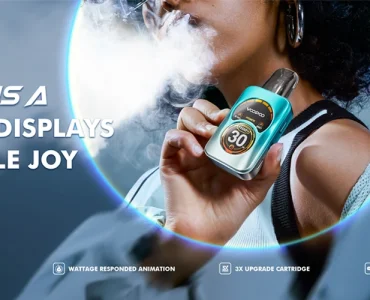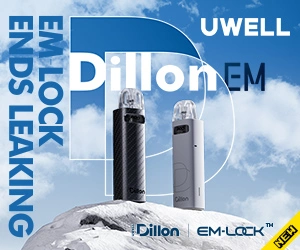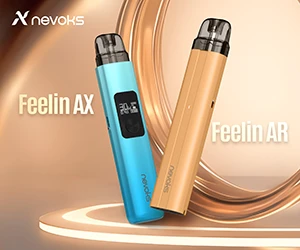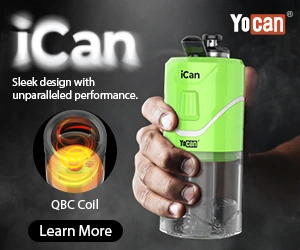The United States Postal Service has finalized a rule that prohibits the carriage of vaping products via mail. Effective October 21st, 2021, the ruling means that, with a few exceptions, vapers will no longer be able to acquire products online using USPS. The rule will severely impact the ability of vapers to acquire products online that have proved to be a safer alternative to smoking.
The USPS Vape Mail Ban: What it Is, What It Says, and Why it Matters
The final rule, provided by the USPS, was expected. It represents the culmination of a long, drawn-out decision-making process that has been looming for months. The “vape mail ban” is the colloquial name given to the PACT act. An abbreviation of “Prevent All Cigarette Trafficking”.
The aim of the PACT act was to prevent minors from being able to acquire tobacco products online. However, as with many of the current restrictions, it isn’t just the youth who have been prevented from acquiring vaping supplies online using the postal service.
The ban was set into motion last spring. As part of the COVID relief spending bill, the PACT act lumped vaping, and pretty much all vaping products, under the same umbrella as cigarettes. The entry into the federal register, dated October 21st, 2021, states: –
“Section 602 of the POSECCA adds “electronic nicotine delivery systems” (“ENDS”) to the definition of “cigarettes” subject to regulation under the Jenkins Act. As a result, ENDS are now subject not only to rules and restrictions governing remote sales under the Jenkins Act but also to separate restrictions and exceptions for postal shipments, which rely on the same definition.”
The USPS ban on shipping vaping products was initially scheduled to be implemented in April of 2021. However, there was a delay as the United States Postal Service reviewed the legislation and took comments about the proposed restrictions.
There are a few exceptions where vaping products can be mailed under the current ruling. According to the USPS final rule, vape products can be mailed:
- Within Hawaii and Alaska
- Between businesses for ‘business purposes’
- Between individuals. This is limited to lightweight, non-commercial shipments. There are also restrictions in place that limit this to 10 packages within 30 days.
The USPS had a lot to review. They received over 15,700 comments, many of which were, by their own admission, “letters and general expressions of ENDS users’ dissatisfaction with the POSECCA” (Preventing Online Sales of E-Cigarettes to Children Act).
The vape mail ban itself is expansive and damaging. It doesn’t just prohibit the mailing of things such as vape eliquid, either. Aside from removing the ability to mail electronic devices, it elaborates and includes “Any component, liquid, part or accessory of an electronic nicotine delivery system, regardless of whether sold separately from the device”.
So that would appear to include coils, tanks, mods, batteries, pretty much everything you could name with regards to an e-cig. And it goes even further. There doesn’t even have to be nicotine present at all! The US Congress is to blame. As the document states:
“Congress expressly provided that ENDS products extend beyond nicotine related use, as relevant products may deliver ‘nicotine, flavor or any other substance’.”
Interestingly, the final rule does go on to state that products approved by the FDA for sale as tobacco cessation products are excluded from the ban.
The comments made to the USPS were worthy of note. Vapers and those within the industry proposed many alternatives that would have allowed vapers to continue vaping without the danger of vaping products falling into the hands of the youth. These included:
- Age verification requirements at the point of delivery
- Warning labels
- Reduced amounts of nicotine permitted in packages
- Age verification provided and regulated by sellers before shipping
All of the above could have worked and, as it stands, the majority of online vape retailers already require age verification at the time of purchase.
While the final outcome is entirely undesirable, it is interesting to see a government body at least provide some measure of rationale and discourse in their decisions. The blame, as stated previously, lies entirely with Congress.
Why?
The postal service does make mention of several notable points. To paraphrase, their hands are tied: –
“The Postal Service lacks the authority to adopt a regulatory scheme different from what Congress has prescribed.”
So, what is the answer to this rather bleak picture?
Could ENDS providers seek an exception?
Possibly, but it remains to be seen whether this will be the case. The federal register, both in its final rule and in guidance published in April 2021, states that no exceptions can be granted until such time as the final ruling is issued. USPS has been resolute in following Congress’ demands, so it is unlikely to change tack now that it has something laid down in ‘black and white’.
“It’s not us, you understand? We just follow the rules…”
It is certainly a difficult time for vaping. The only viable alternative could be utilizing services other than USPS to receive “vape mail”. Private logistical networks could be a solution. However, this would lead to further expense and is a huge undertaking for an industry that appears to be being attacked on all sides. Furthermore, this option does not exist on a truly national level, with vast areas left completely devoid of options.
The situation is not helped as many other delivery firms have taken the ‘moral’ high ground and followed suit. FedEx, DHL, and UPS have all made the decision to not carry vaping products.
Why the above matters is obvious.
The American Vaping Association makes the point eloquently: –
“This rule has sent shockwaves through the small- and medium-sized businesses in this industry, as well as consumers who rely on these products to stay smoke-free.”
And therein lies the rub.
The people who are unduly punished by this ruling are not making and providing the very cigarettes that Congress is trying to prevent. Producers of conventional combustible cigarettes don’t ship via the USPS, FedEx, or UPS. They have their own supply networks.
Depending on your state, it is quite possible to receive alcohol, pharmaceuticals, cigarettes (for consumer testing, of course), and even firearms in the mail. Yet vaping (and any product associated with it) is being painted as a pariah.
So, what’s the upshot?
The USPS “vape mail ban” is harmful to small and medium businesses and the end-user. Vaping has been proven to be a better alternative to smoking. By removing easy access to vaping products, the ban could push people back to smoking.
The use of ‘catch all’ terms in the legal wording of the final rule has led to vaping being treated in the same way as smoking, even though it is entirely different. With the only alternative open to most vendors being the use of private services, it remains to be seen whether this will be a truly viable option.










Add comment